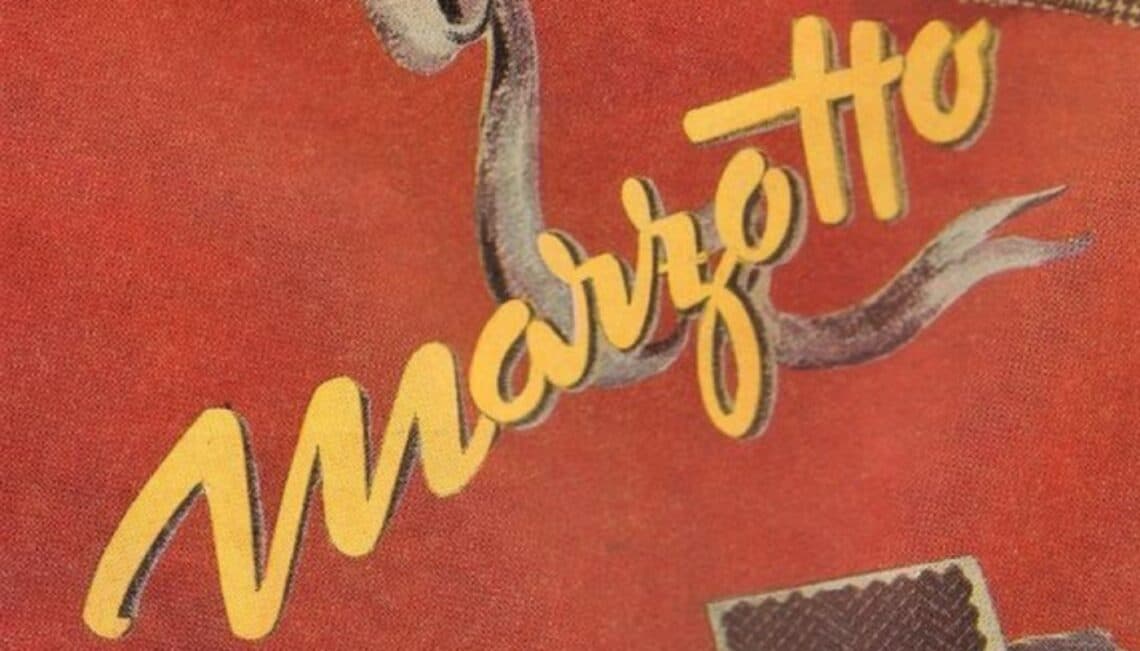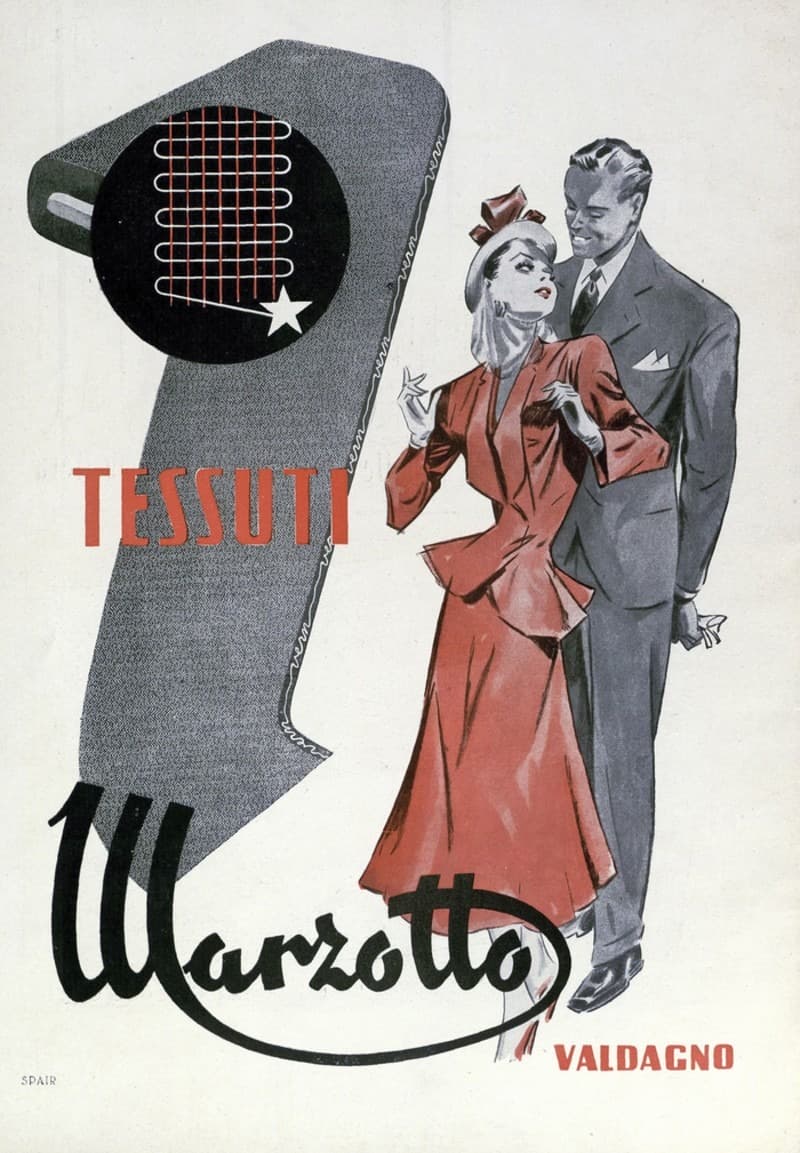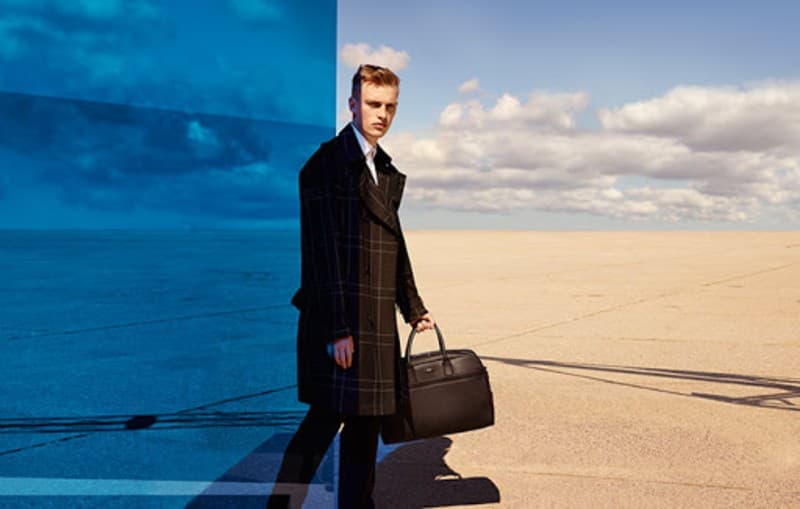
Marzotto
Marzotto is an industrial textile and clothing group. The inheritance left by Gaetano Marzotto at his death in 1972 was not solely made up of portfolios, industries, balances, brands, and markets. He also left his children, who took over the administration of the group, a far larger company than he had received from his father Vittorio Emanuele.
Above all he left a legacy of entrepreneurial pride and industrial culture that was not crushed by the administrative fear of reality, even during periods of financial hardship, years of crisis, and economic storms. In a sort of spiritual will, Gaetano wrote, “I did not run the company as if it were a portfolio of shares in a safe, instead I spent and assumed risks in order to created remunerated work.”

His philosophy
His philosophy was one of development and expansion, as soon as the economic climate allowed it. This was his cultural inheritance, which was passed on to the fifth generation of the Marzotto family when he was succeeded in 1972, just when the textile production industry was in crisis. In 1975, the group announced losses of around 6 billion lire. Eighteen years later, in 1993, the operating profits totalled more than 128 billion, on a turnover of 2,000 billion. In 1984, the turnover was 402 billion, in 1997 more than 2400, three quarters of which was earned abroad, with an average annual growth of 14.73%.
At Gaetano Marzotto’s death
At Gaetano Marzotto’s death, the products and markets that accounted for most of the turnover at the end of the twentieth century did not even exist. The group now had works in seven countries (Italy, France, Germany, Switzerland, the United States, Tunisia, and the Czech Republic). It has a commercial presence in 90 others, a position in the front row, often as leader (in the case of yarn and pure wool textiles, long fiber linen yarns and classic menswear) among the big clothing and textile producers across the globe, and a growing presence in the sportswear and womenswear sectors.

Figures and achievements
The company’s figures and achievements testify to an extraordinary, victorious turnaround. Within three decades, the Valdagno firm changed its appearance without betraying its original, historic direction. It embodied an entrepreneurial strategy that, before being put into action, had to draw on new blood through a phase of overhauls (1972-83), significant restructuring, and adaptation of machinery. One of their main priorities was to be able to respond to a multi-faceted market and to different needs, and as a consequence their restructuring strategy, they placed an emphasis on exports. Meanwhile, many European clothing and textile firms froze investments, considering the crisis to be irreversible, thereby opening up opportunities to Italian goods.
The objective achieved
The objective during that decade was achieved: exports rose from 12-13% to 40%. As soon as restructuring was complete, Marzotto remained faithful to its deep-seated cultural background. It continued expanding, a necessity in order to establish dimensions and structures in line with the multiform diversifications of the international market and in order to reinforce the key elements of the Valdagno company, namely a horizontally and vertically integrated group that oversaw the entire production cycle, from the raw materials to the finished garment.
The idea was to acquire large companies in difficulty
Marzotto looked to acquire large companies in difficulty. Bassetti, one of the most important Italian textile groups but by this period large and failing, was taken over by Marzotti in 1985. Marzotto split the company, ceding the household linens division to Zucchi (in 1991 it sold the cotton works to Olcese) in order to concentrate on the National Linen and Flax Works, thus assuring its world leadership in the linen yarn sector. It was a great financial and administrative undertaking. However, during the course of a single year, it was so well assimilated that, in 1987, the Group was able to continue expanding, acquiring the state-owned Lanerossi Group, founded over a century before and a pioneer in the textile industry.
The annexing of Bassetti and Lanerossi
The annexing of Bassetti and Lanerossi put Marzotto in a strong enough financial position to expand abroad with, however, a change in their philosophy: no longer to pinpoint companies that were struggling. In 1989, Marzotto took over the linen works Le Blan, a leading player in France, thereby consolidating its world leadership in the sector of linen manufacture. At the end of 1991, after the acquisition of the wool factory Guabello of Biella, they continued their policy of expansion with the conquest of the German arm of Hugo Boss, which had been purchased in 1989 by a Japanese group for a very large sum, mismanaged, and therefore put on the market again at a much lower price. It was a great entrepreneurial coup. Hugo Boss was an 850 billion lire business.

In 1993, the Boss acquisition
In the 1993 balance sheet, the Boss acquisition brought Marzotto’s turnover very close to 2 thousand billion lire and sealed the international character of the Group (63% of their sales were made outside Italy). With the need to continuously relocate production abroad in order to maintain competitivity, Marzotto soon opened a linen factory with local partners in Tunisia. During summer 1994, it acquired the wool factory Mosilana in Brno in the Czech Republic in order to focus on combed textiles in pure wool and to build a bridge with Eastern markets.
The group has 9,300 employees. After having overseen the renewal and expansion of the company, in June 1998 Pietro Marzotto handed over its presidency to Jean de Jaegher, remaining a member of the executive committee alongside his brother Paolo and Andrea Donà dalle Rose. The quarterly figures for the Hugo Boss holding led to an increase in net profits of over 14%.
In 1997, Lebole was acquired
At Arezzo, the workers’ union lobbied local entrepreneurs to reacquire the Lebole brand from Marzotto and bring it back to its historic base in Tuscany. No official offer was made to Marzotto who, in any case, decided to close the Florentine works. The regulated National Linen and Flax works was also in difficulties due to strong competition from outside Europe. The total turnover was reduced by 20%.
Marzotto ended 2001 with a net profit of 118 million euros (down 10.8% on 2000). Turnover, which reached 1,757 million euros, grew by 9.3% (18% in Italy and 82% in other markets). The increase was due to the development of the German Hugo Boss (up 19%) and Marzotto clothing (up 7%). The textile sector experienced a strong downturn with a drop of 10.8% to 379.9 million euros. After receiving authorization from the anti-trust committee, the Marzotto Group took over Valentino Plc 100% from HDP. Marzotto agreed to pay HDP 240 million euros (35.6 millions for the capital and 204.4 millions for the financial debt).
During 2001…
The managerial committee nominated Antonio Favrin as President, Michele Norsa as CEO, and Fabio Giombini as Managing Director. During 2001, even though its business volumes reached 132 million euros, Valentino made a loss of 28.5 millions.
Michele Norsa was appointed to relaunch Valentino. Now it is part of the clothing devision of Marzotto, alongside the Hugo Boss and Marlboro Classics brands.
The global turnover in 2001 registered 1,756.6 million euros, an increase of 9.3%. 15.7% of this came from the clothing sector. Revenues, however, decreased — with the group’s net profits stable at 118 million euros (down 10.8%).
A drop in turnover and profits. Marzotto closed the first nine months of the year with a net turnover of 1,389 million euros, down 3.2% on same period in 2001. Profits were also down, from 206 million euros to 140 millions (-31.9%). Figures for the third quarter also showed a decrease. The comprehensive net profit for minority shares was 52 million euros, compared with 81 millions during the same period in 2001, while shareholders’ net revenues were 25 million euros, almost half the 47 millions from the same period in 2001.
Marzotto sold their non-strategic shares
Marzotto sold their non-strategic shares. 20% of the capital from a real estate company, sold to Pirelli&C. Real Estate, brought a net gain of 28 million euros. Similarly, it gave up its hydro-electric palnts to the Eusebio Group, resulting in a net gain of 15.7 million euros. The aim was to reach a total of 44 million euros during the course of 2003.
Matteo Marzotto, 36, joined Valentino’s board of directors. From 1992 onwards, he had held various roles within the family firm, becoming CEO of Marzotto Distribution in June 2002.
From 1994 to 1999, he was on the board of directors of the Young Entrepreneurs Group of Confindustria. Stefano Festa Marzotto, vice-president of the company, is entrusted with the development of the brands Belfe and Post Card in the markets of the Far East. Marzotto closed 2002 with profits down by 25% at 75 million euros (compared with 118 millions in 2001) and an increase in turnover at 1,788 millions (up 1.8% on 2001).
The 2001
The growth in business (up to 1,789 million euros from 1,757 millions in 2001) was attributed to the consolidation of Valentino, which compensated for a drop in the wool textile sector. Marzotto clothing and Hugo Boss remained stable. Operating profits totaled 125 million euros (7% of turnover), a drop of 32.2% compared with the 185 millions of 2001. The net shareholder profits dropped to 42 million euros, from 56 millions in 2001. Extraordinary proceeds increased to 28 million euros (8 millions in 2001), thanks to the sales of the real estate company and hydroelectric plants. Net debts increased from 419 to 638 million euros, due mainly to the acquisition of Valentino and its concurrent debts (234 million).
UBS redeced its participation
UBS reduced its participation in Marzotto to 2%. Some members of the Marzotto and Donà dalle Rose families — but not Pietro Marzotto — agreed on a syndicated pact for the control of the company. It would transform the group into a holding partnership of the brands Hugo Boss, Linen Works, Marlboro Classics, Zignago and Valentino industries.
Giovanni Gajo is the new President of the Marzotto Group, taking over from Innocenzo Cipolletta. Antonio Favrin remained as CEO, also taking over the role of Vice-President from Jean de Jaegher. The board of directors (serving three years from 2003-2005) consisted of Ferdinando Businaro, Luca Corabi, Andrea Donà dalle Rose, Sergio Erede, Gaetano Marzotto, Nicolò Marzotto, Pietro Marzotto, Umberto Marzotto, Luigi Amato Molinari, Roberto Notarbartolo di Villarosa, Paolo Opromolla, Dario Federico Segre and Giuseppe Vita. During the first quarter of 2003, thanks to the consolidation of Valentino and the recovery of the textile sector (up 13%), the turnover totalled 544.2 millions (up 3.5% compared with the 525.7 million of the same period in 2002), despite the drop (-5%) in the clothing sector, due primarily to a drop in revenues at Hugo Boss.
The drop in net profits, however, was quite significant, the overall profits of minor shareholders went from 49.8 million in the first quarter of 2002 to 36.8 millions (down 26.1 points), while the accrued profits of the holding company dropped from 22.5 millions to 15.5 (a drop of 31.1%).
A three-year license agreement was signed between Stephan Janson and Marzotto for the new line Stephan (substituting Ferré Forma, which had come to an end) dedicated to larger women. This license is renewable for three further years, following the Marzotto tradition. Indeed, the company has never signed an agreement with a designer for less than ten years.
The collection (for sizes 44 to 60)
The collection (for sizes 44 to 60) was to be launched in Spring-Summer 2004. It would be produced and distributed by Marzotto in 80 multi-brand stores and some corner spaces abroad. Sales were to focus first on Italy and then the United States, Spain, Japan, England, and Russia, with the aim of taking over 40 million euros in retail turnover by the end of three years.
The outsize market demonstrates significant growth rates, approximately double that of the standard collection. 24% of European women wear larger sized clothing. (Gabriella Gregorietti)
The contract between Valentino Garavani, Giancarlo Giammetti, and the Marzotto Group was renewed for a further three years. Damiano Biella joined the creative department: his previous experience was at Gucci and as design director of Celine.
A consolidated net turnover for 2003 rose to 1,743 million euros, with a decrease of 2.5% on 2002 with the exchange rate unchanged. The group’s operating profit was 133 millions (7.6% of the turnover), an increase of 5.7% on 2002.
Pietro Marzotto sold his share of the group (17.42%) to his brother, Paolo, the financier Canova and to Antonio Favrin, the group’s CEO. He continues to own 10.5% of Zignago.
In 2004, Hugo Boss had a turnover of 1.2 billion euros (compared with 1 billion in 2003) and a net profit of 88.2 millions euro (+7%). The group from Valdagno announced its intention to separate its clothing and textile sectors in order to re-evaluate their distinctive roles and to promote their development.

Valentino
In the same month, Valentino, the label owned by the Marzotto Group, bought the majority shareholding in the Valentino boutique, Japan. “It is the second biggest luxury market after the United States and during the last few months it has shown positive signs of growth. It is also an important point of reference for the development of the other Eastern markets and we plan to spend 10 million euros during the next three years to relaunch distribution,” declared CEO Michele Norsa.
Consolidated turnover for the year totaled 1.824 billion euros, +5% on 2003; consolidated net profits totaled 82 million euros (+41%). In particular, the clothing sector, with a profit of 1.5 billion euros, increased 5% at the current exchange rate; while the textile sector, with a turnover of 302 millions, confirmed the figures of the previous year. Overall, the percentage of foreign turnover was 83%.
Valentino signed a license contract with the Spanish company Pronovias, for the production and exclusive global distribution rights to a collection of wedding dresses. The own-brand Missoni store opened in Catania. The first quarter closed with a turnover of 572 million euros (+8% on 2004), and an operating profit of 89 millions (+16%), and a consolidated net profit of 56 millions (+27%).
A contract between Marzotto and Verzoletto
A contract was signed between Marzotto and Verzoletto to launch a joint venture in the woolen yarn sector for pure wool, acrylic mix and carded knitwear. The joint venture — with a consolidated turnover (2004) of 122 million euros, 69 millions of which made were by Marzotto and 53 by Verzoletto, and an annual total production of 15 million kg — becomes the European leader in terms of volume.
Marzotto SpA and Valentino Fashion Group SpA separate. In the same month, Hugo Boss announced the launch of Boss Orange, a line of men’s sportswear to debut in Summer 2006.
You may also like:

Martini, Alviero

